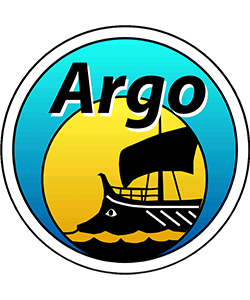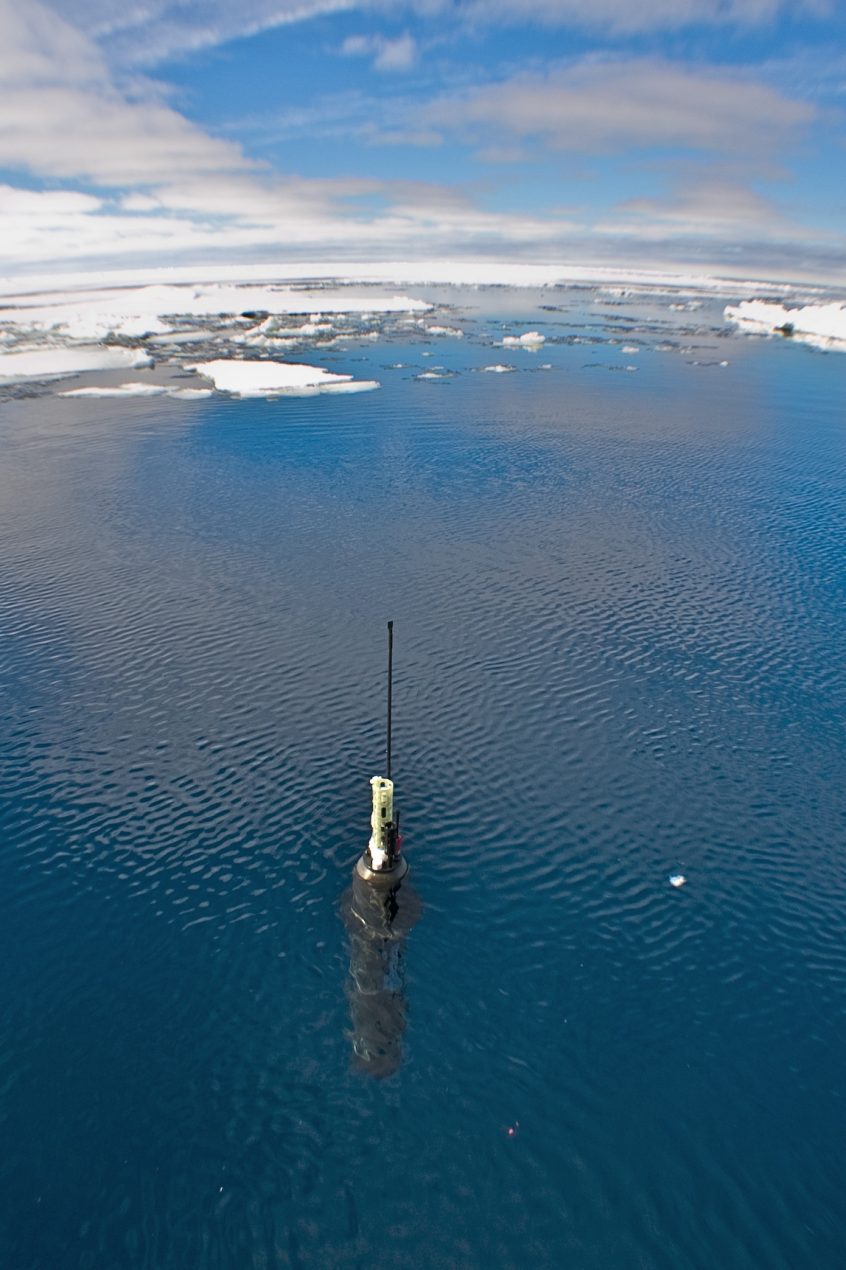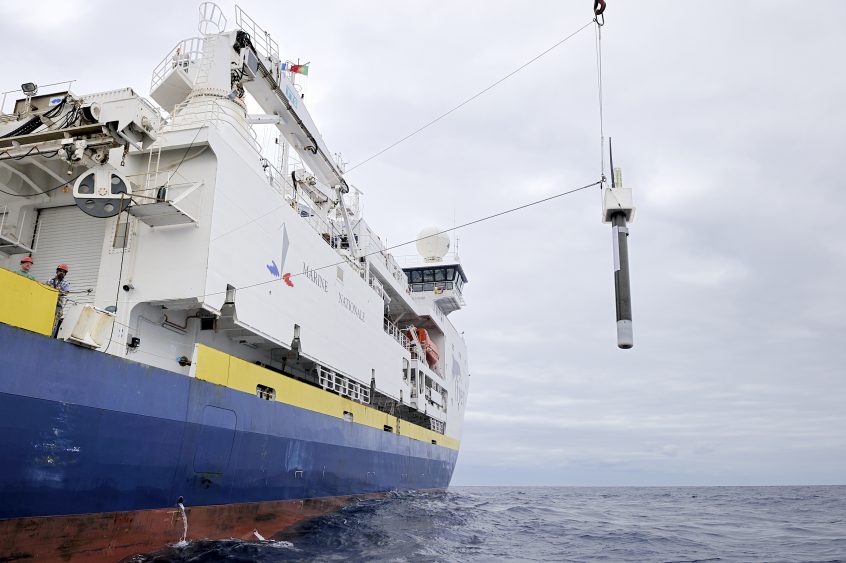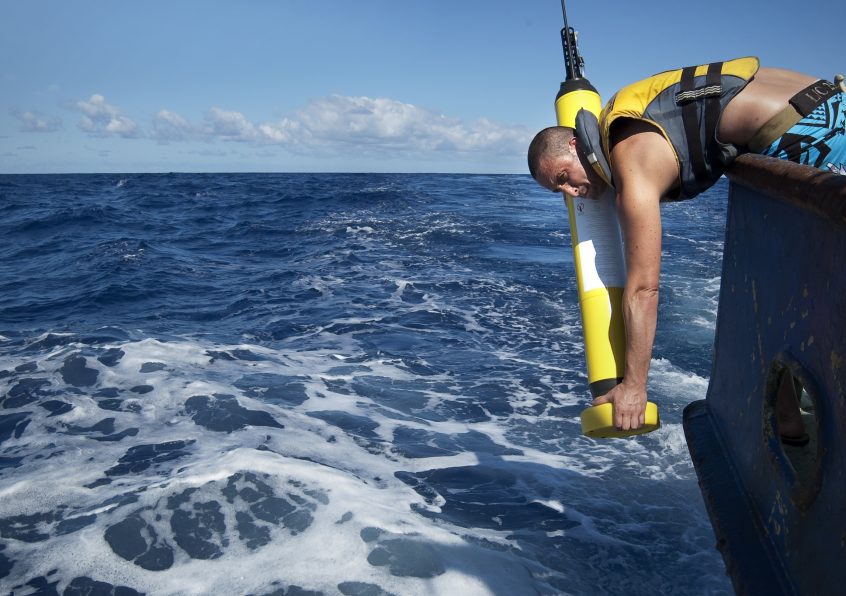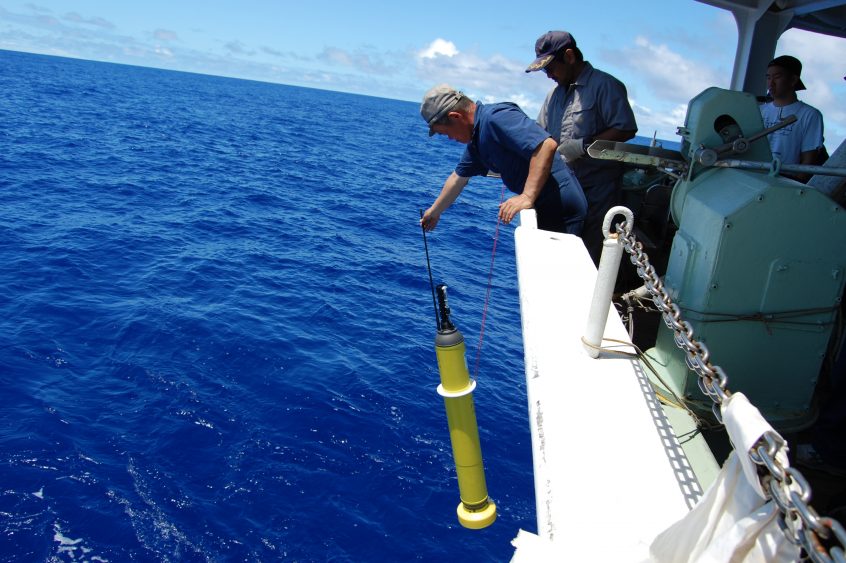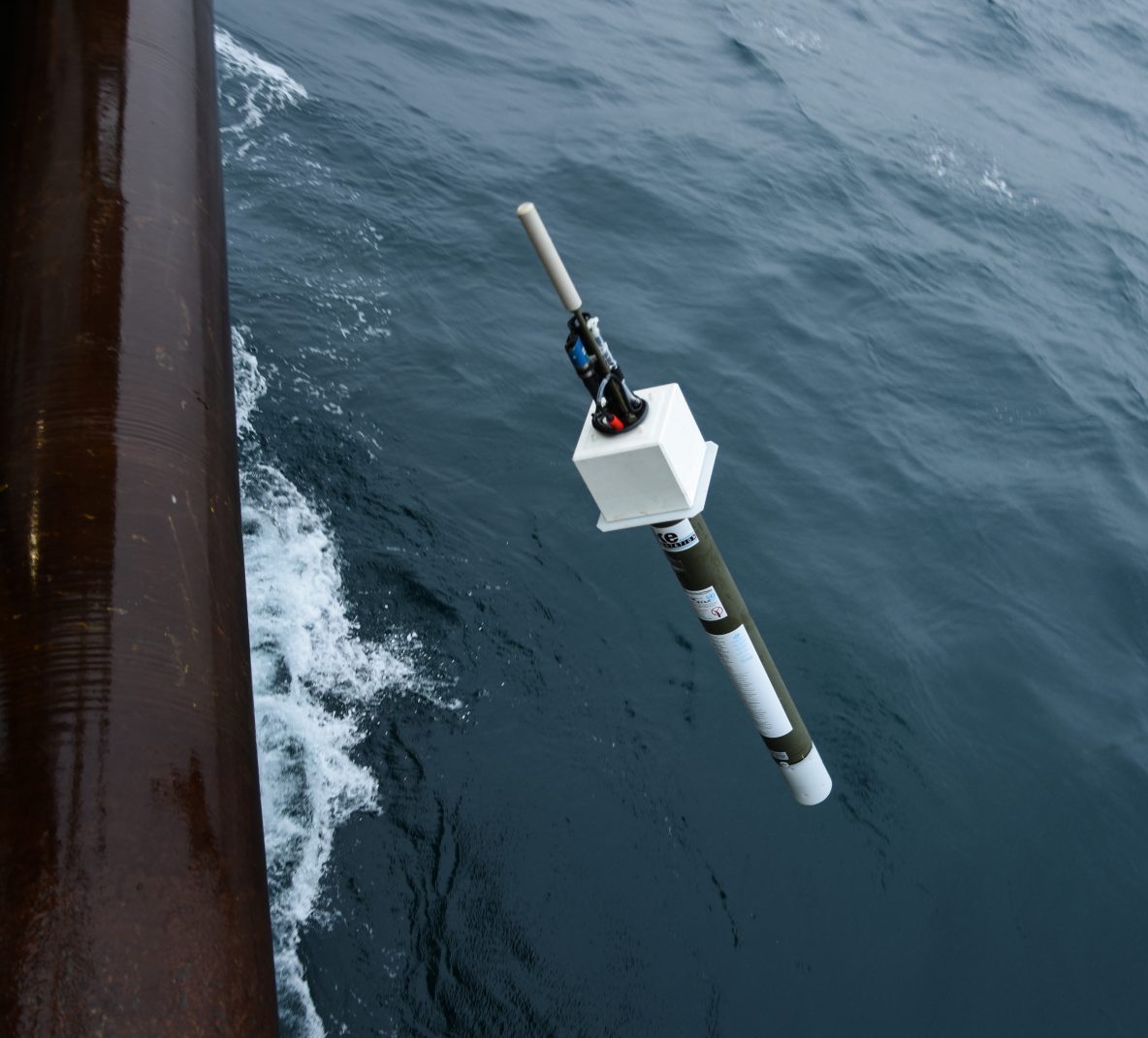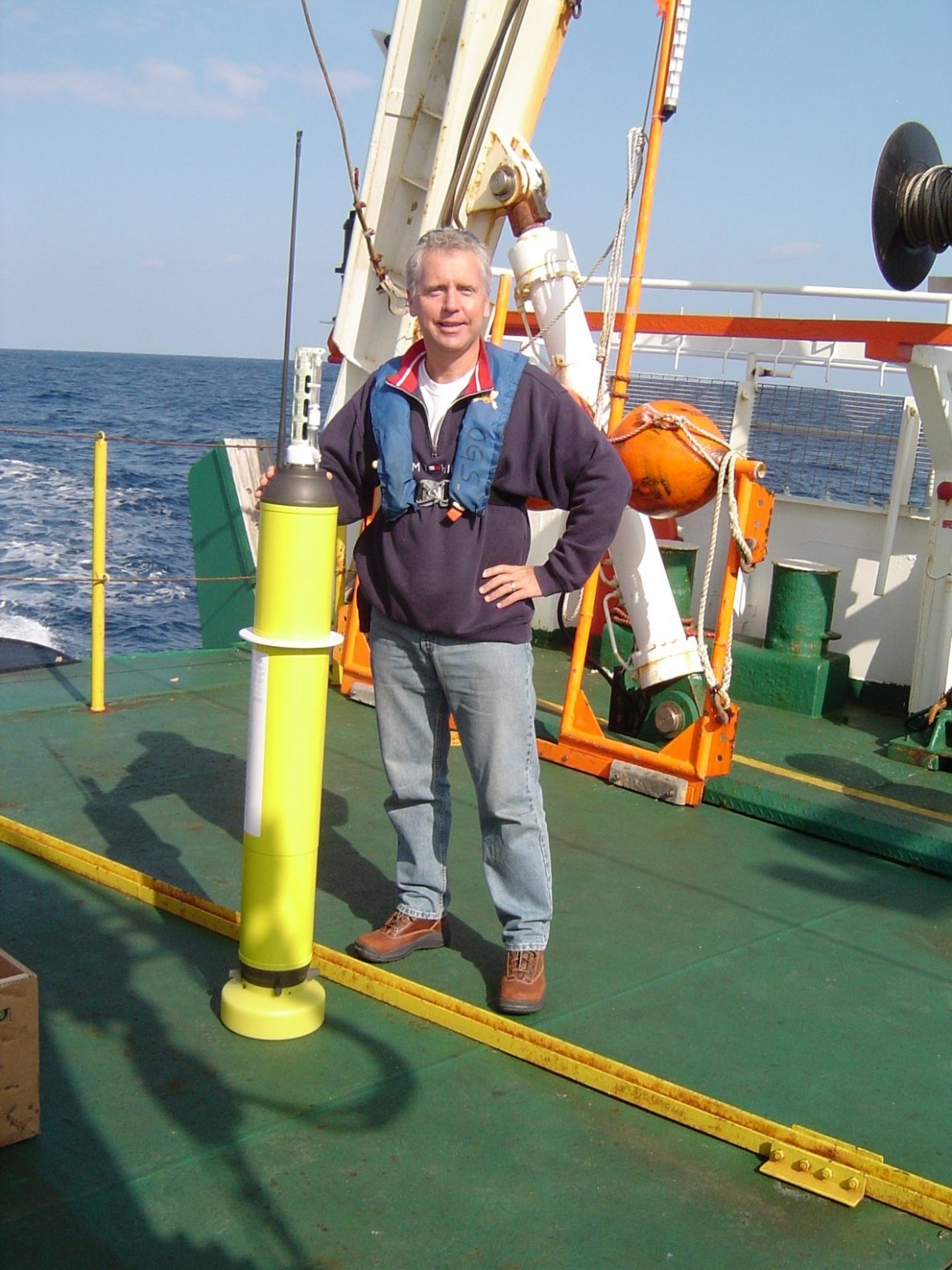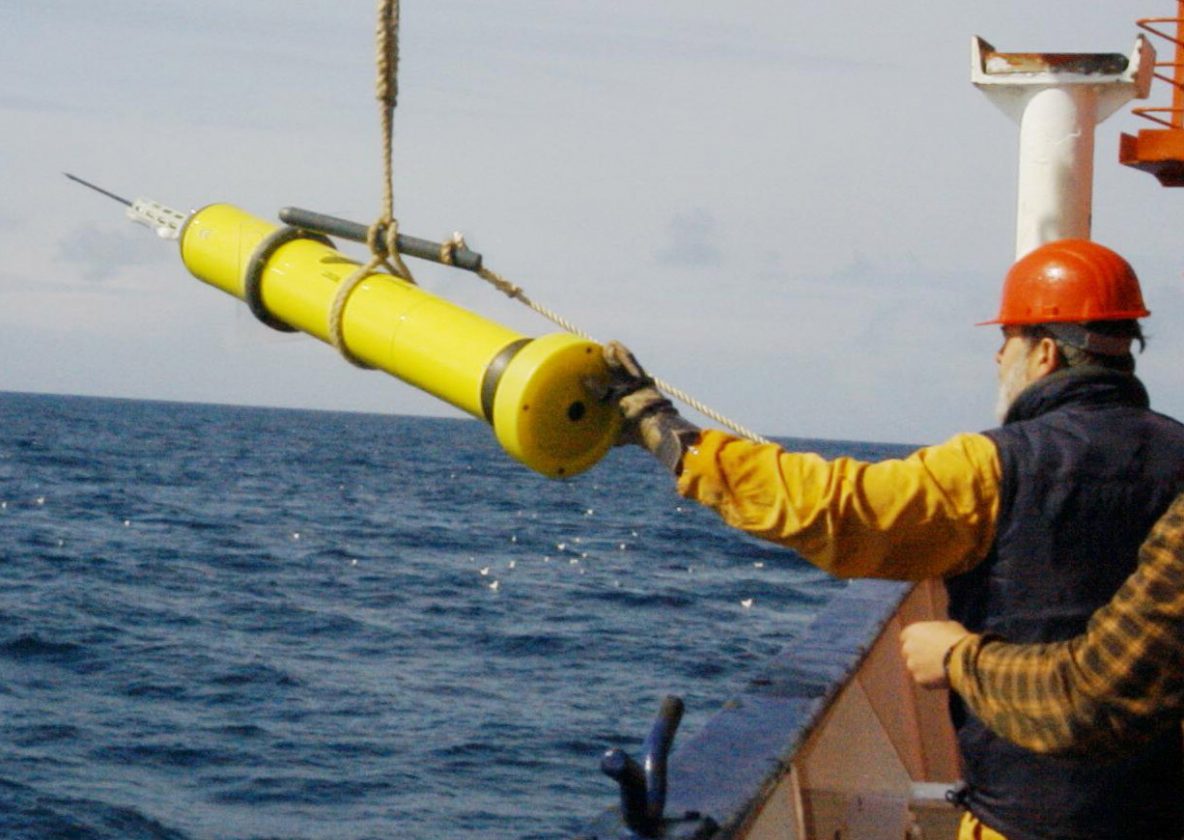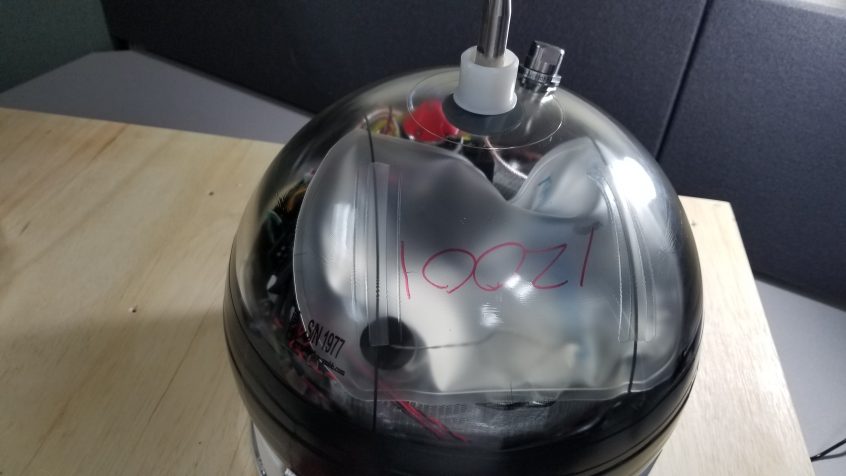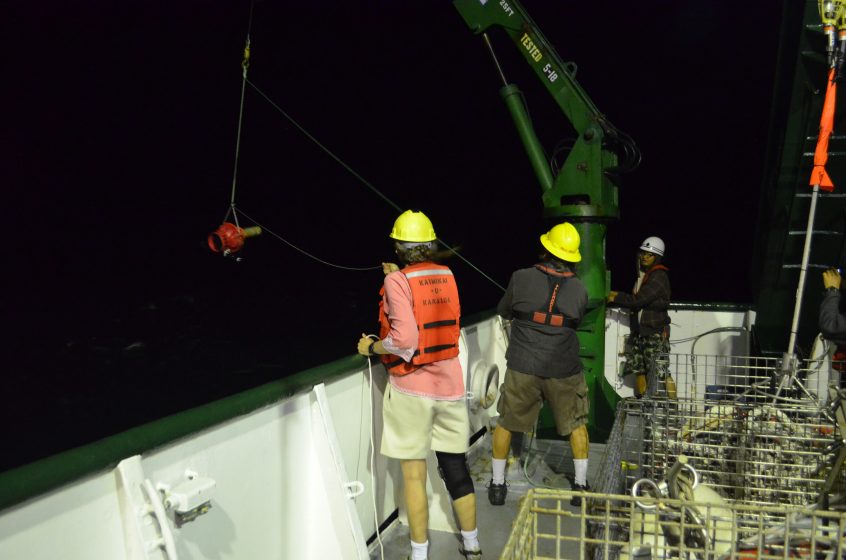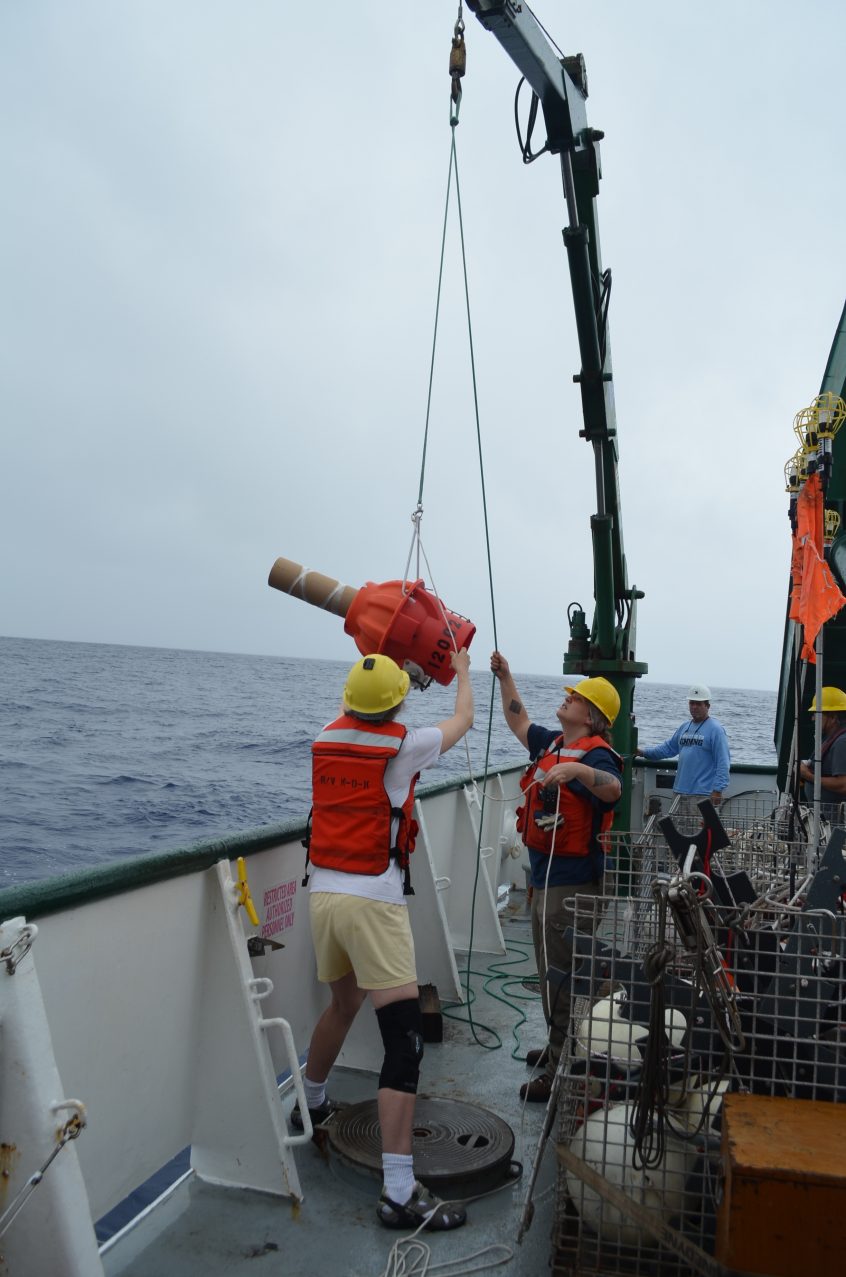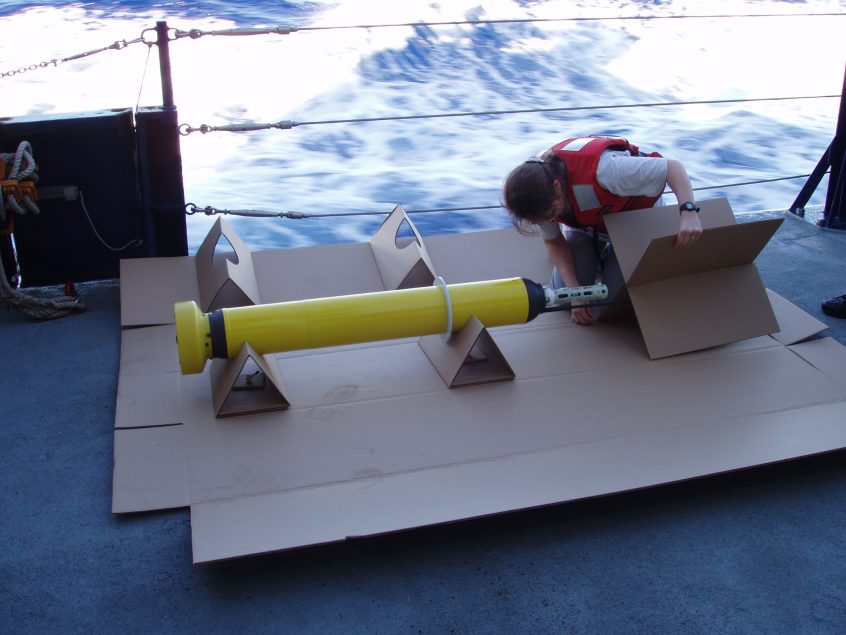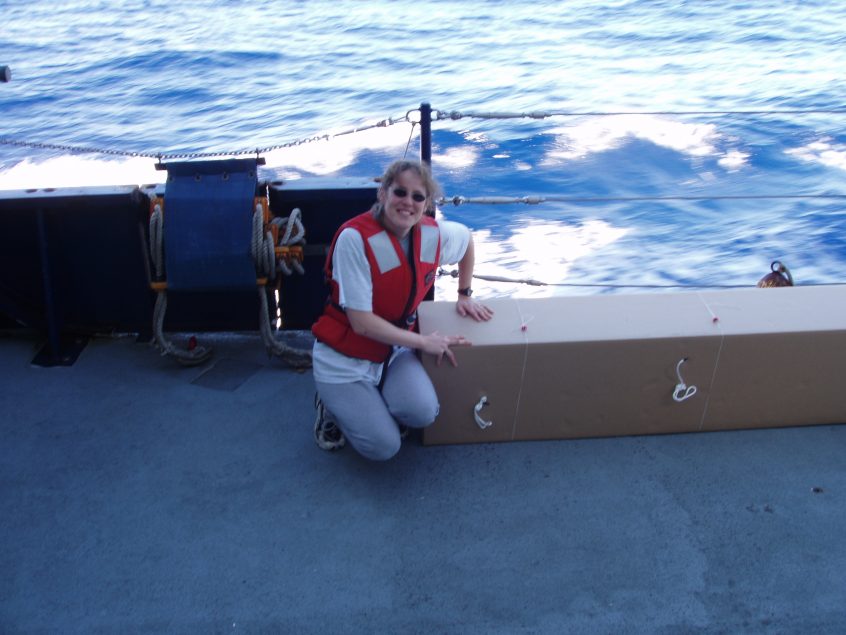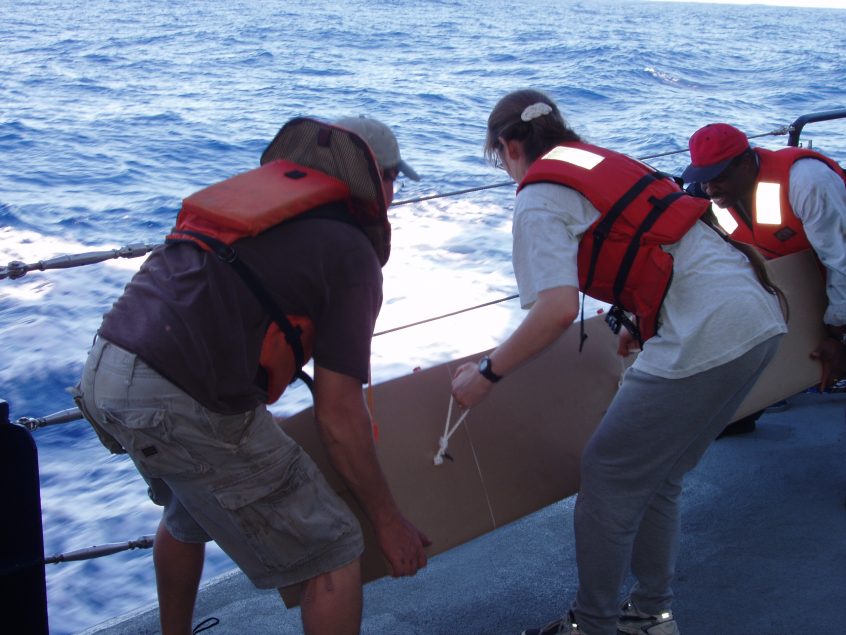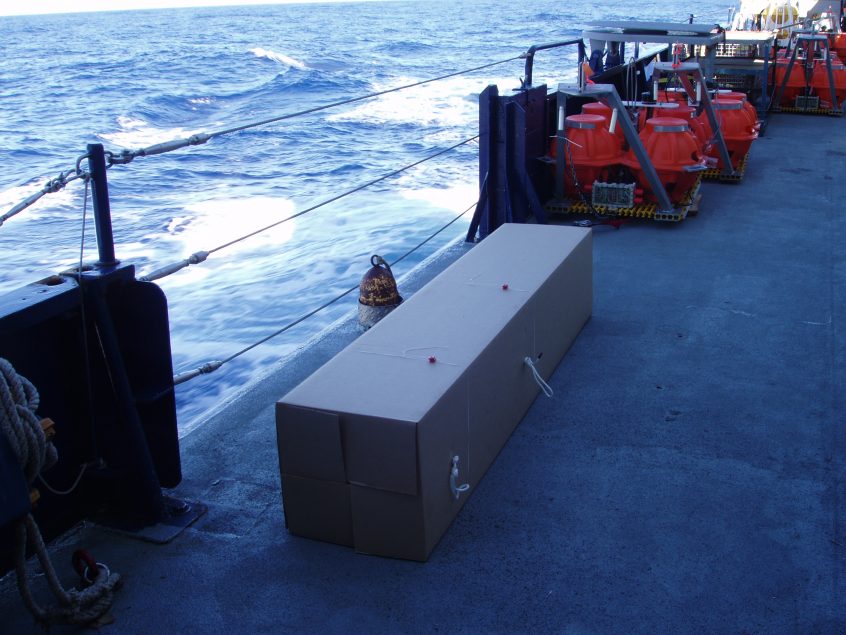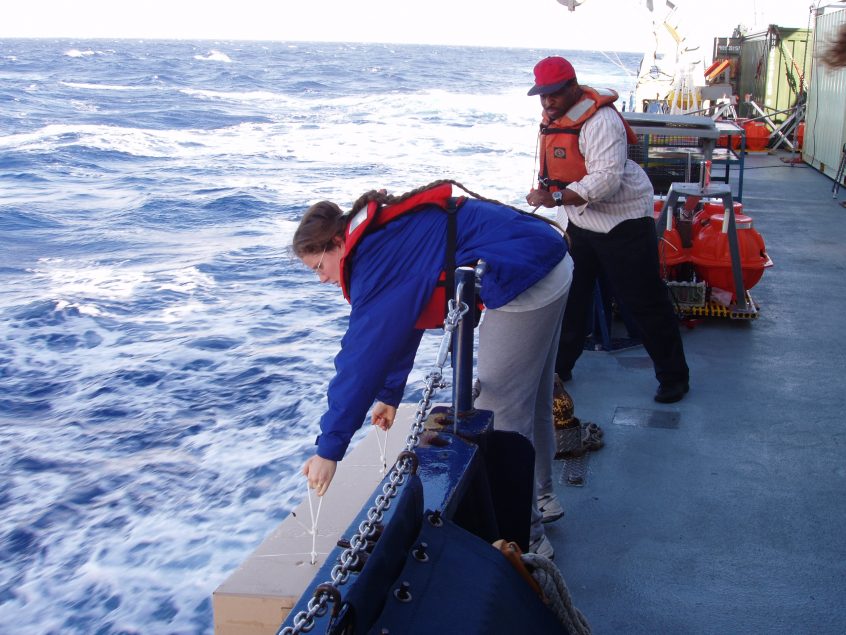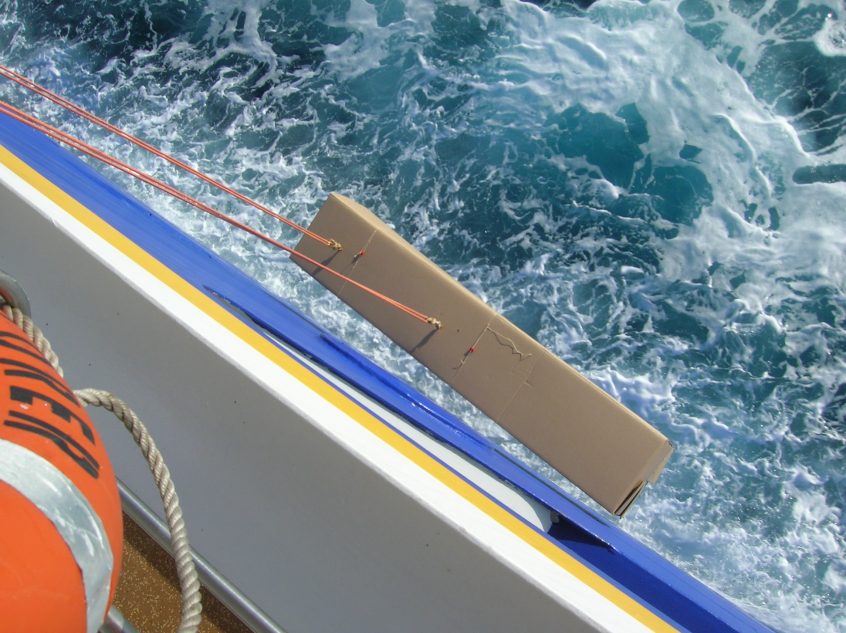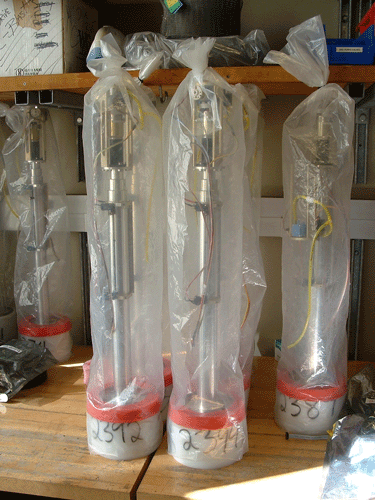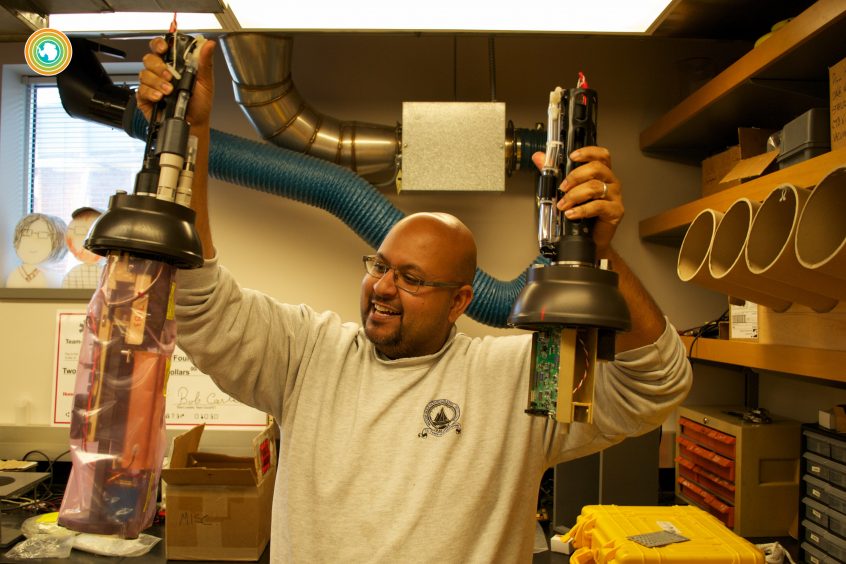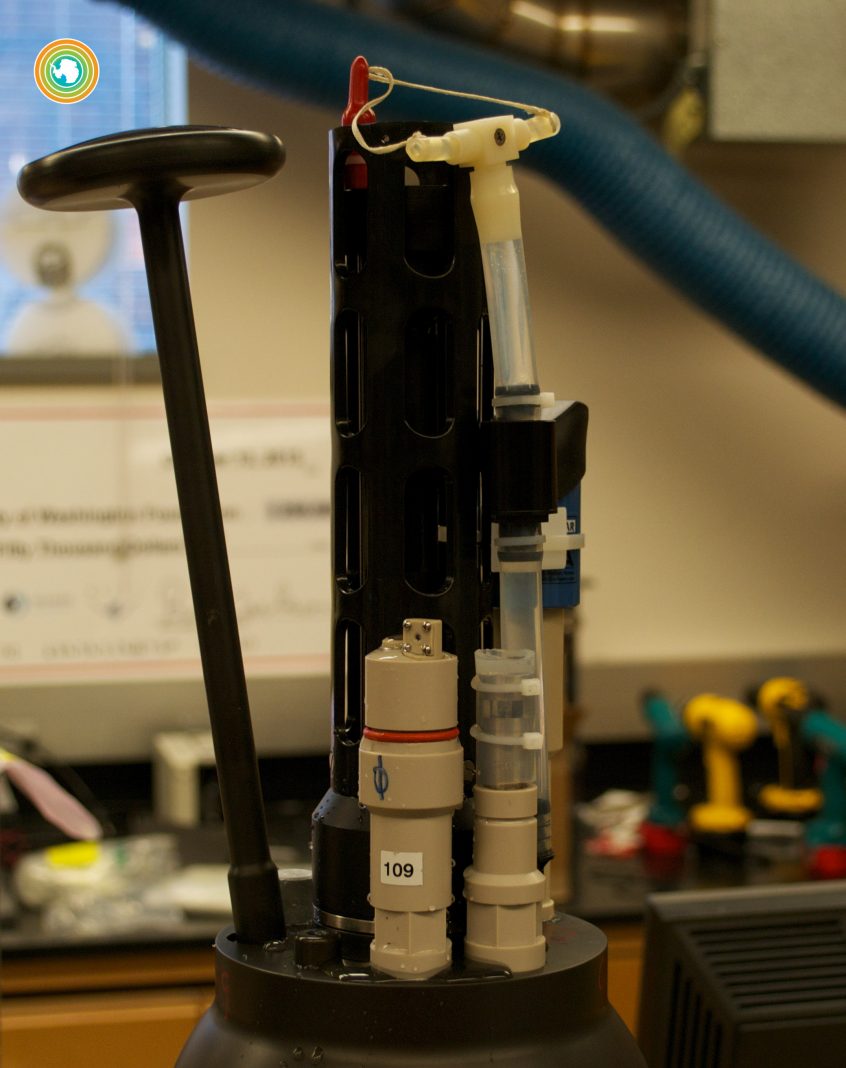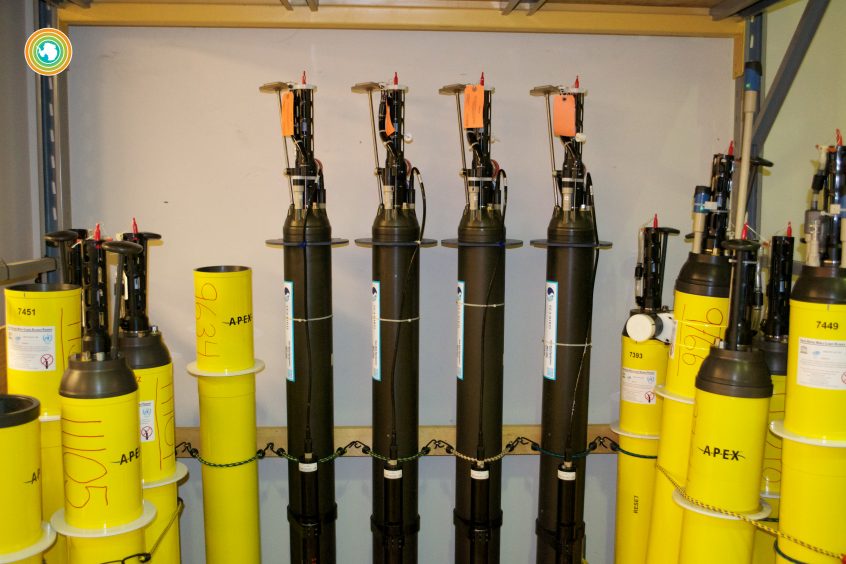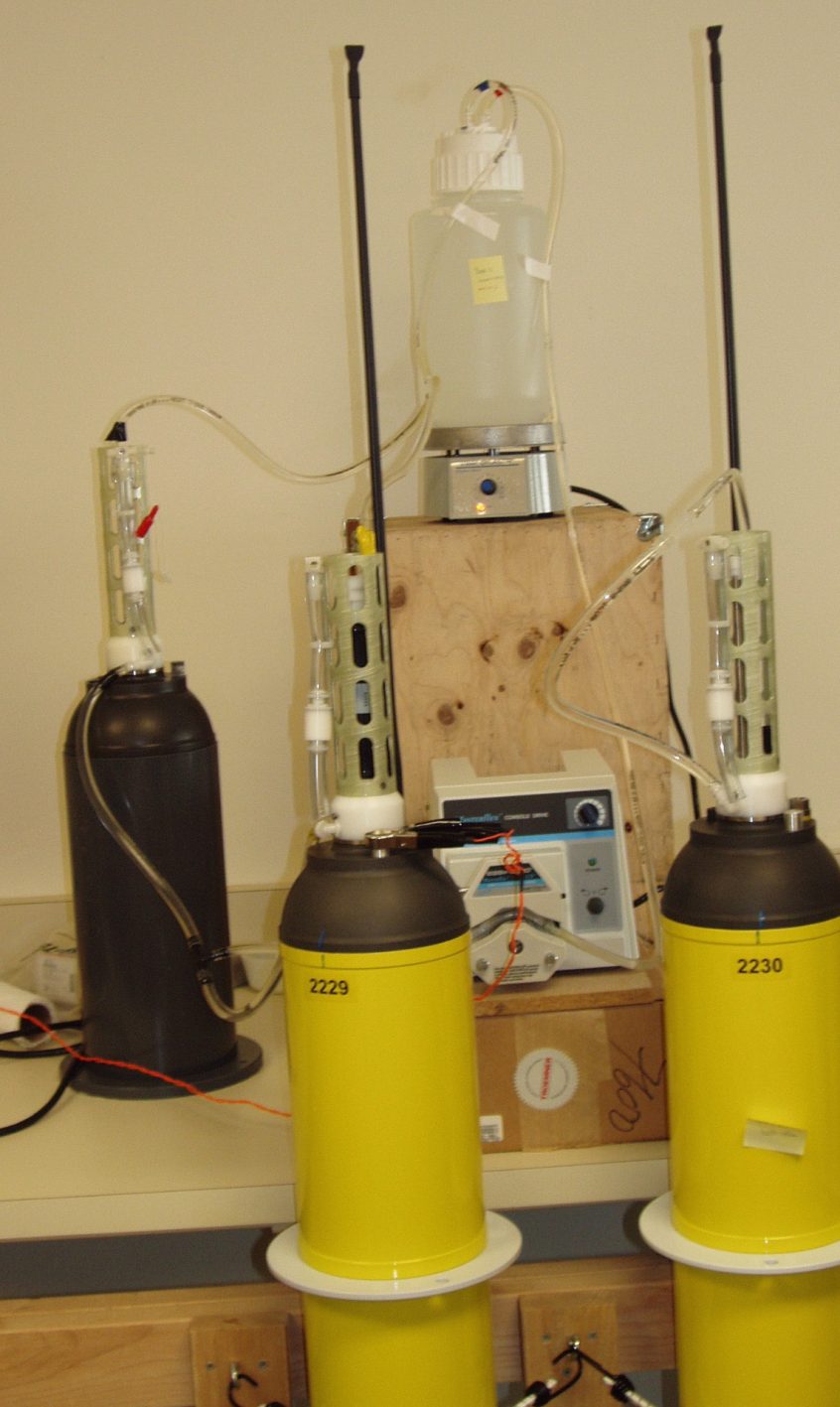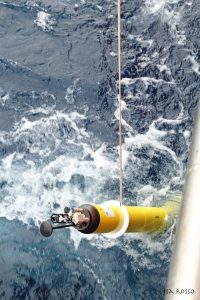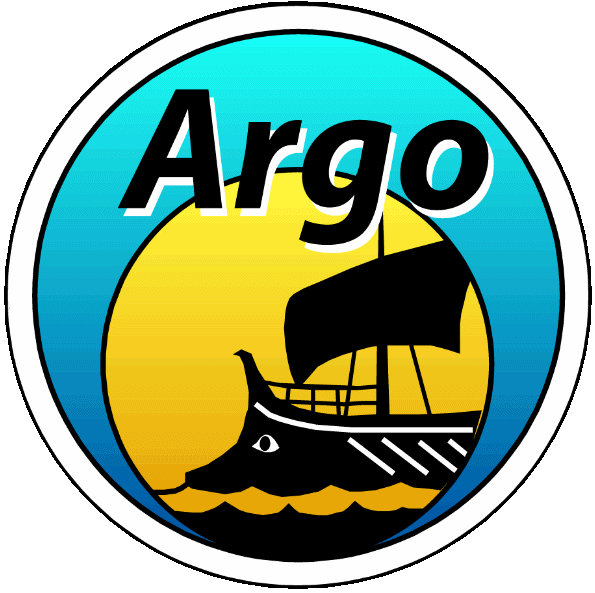The photo galleries on this page were contributed by people within the Argo Program as well as those outside. All resources are freely available for use in publications and websites. Please credit the Argo Program (https://argo.ucsd.edu). If other credit is listed, please include that as well.
Float deployments
Deployment of NEMO floats from the German icebreaker Polarstern Bremerhaven
Deployment of Arvor floats from the French R/V Pourquoi Pas
Other float deployments
Deep Argo deployments from the R/V Ka`imikai-O-Kanaloa
Deploying a float without stopping the ship
The purpose of the deployment box is to protect the float against impact with the water when released from a moving ship, including cross braces designed to protect the antenna. After the box is secured with biodegradable twine knotted using lifesaver candy rings as dissolvable, biodegradable links, it will protect the float when the box hits the water. The lifesaver candy ringss will dissolve after a short time, causing the box to open, releasing the float to complete its mission. The float, in its deployment box, can be lifted over the rail and released into the water manually, or it can be lowered on a line. The process is illustrated in these photos.
Float preparation
SOLO float preparation in the Instrument Development Group Ffoat lab at Scripps Institution of Oceanography
SOCCOM BGC Argo float preparations at the University of Washington float lab
Sensor calibration done prior to deployment
Photo galleries
Logos
Make an Icosohedron
Howard Freeland in Canada has produced the image below which can be cut out and assembled to form a icosohedron.
